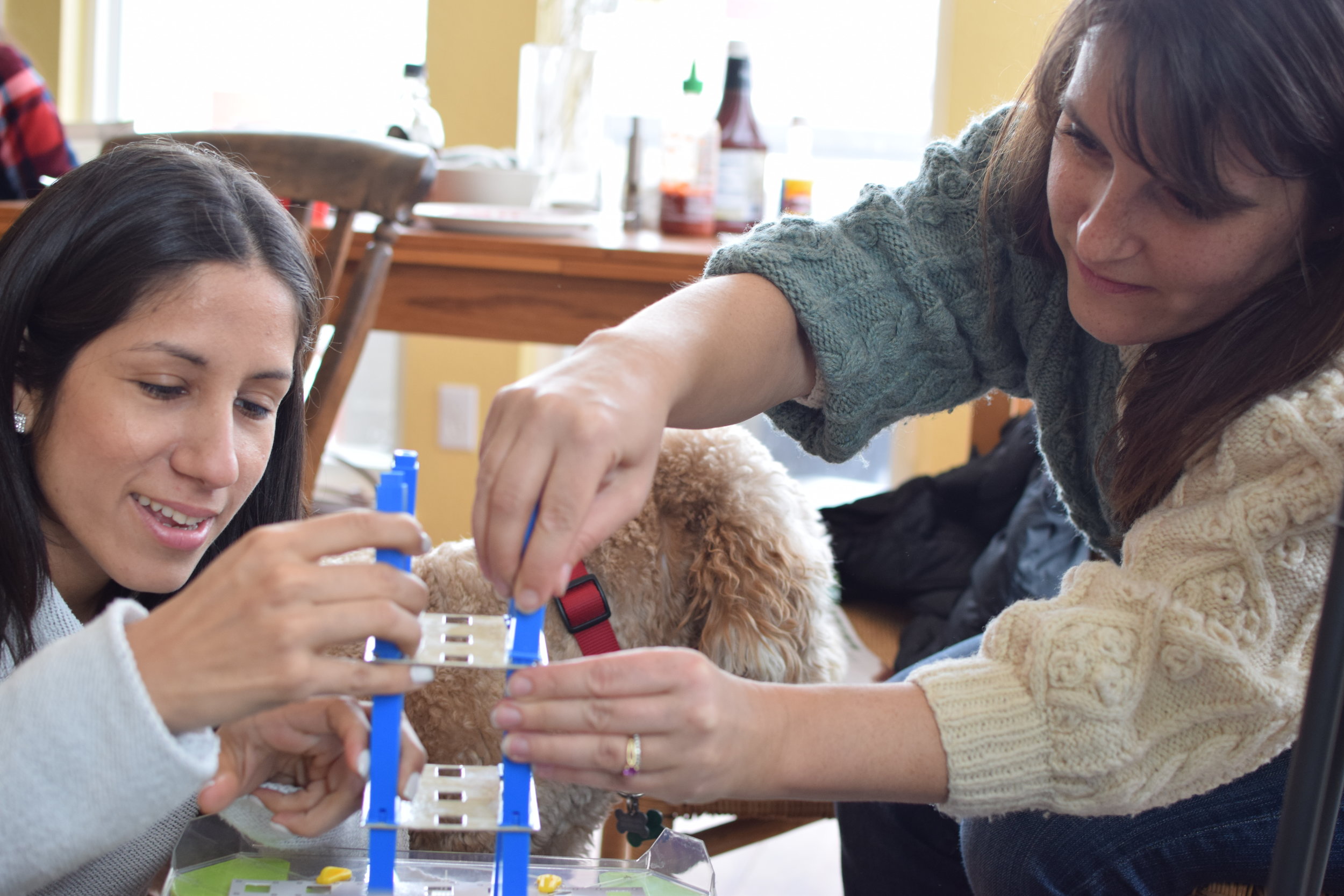Read More
Congratulations to Jenny Ramirez
Induced Seismicity Project in the News
Check out the story from Fox31 here. (Video featuring Anne Sheehan and Jenny Nakai is at the top of the link; video featuring Anne, Jenny and Abbie is at the bottom).
Congratulations to Amy Javernick-Will!
Recent talks
New publication: EFFECTS OF DRAINAGE CONTROL ON DENSIFICATION AS A LIQUEFACTION MITIGATION TECHNIQUE
New paper published on Settlement on Liquefiable ground
Jenny wrote an inspiring blog post about her first year at CU
Check it out here!
A new earthquake engineering toy
Congratulations, Casie!
Introducing... Dr. Juan Olarte
Casie spent 2 weeks in the Philippines
Congratulations, Juan!
Abbie presented at the SEAOSC "Strengthening our Cities" Summit
Her talk on November 7, 2017 examined the role of life cycle analysis in supporting structural resilience and integrating ideas about sustainability and resilience..
New paper on impacts of ground densification as a liquefaction mitigation strategy
Over the past few decades, soil densification has been widely employed to reduce the liquefaction hazard or consequences on structures. The decision to mitigate and the design of densification specifications are typically based on procedures that assume free-field conditions or experience. As a result, the influence of ground densification on the performance of structures and the key mechanisms of soil-structure interaction remains poorly understood. This paper presents results of four centrifuge tests to evaluate the performance of 3- and 9-story, potentially-inelastic structures on liquefiable ground with and without densification. Densification was shown to generally reduce the net excess pore pressures and foundation permanent settlements (although not necessarily to acceptable levels), while amplifying the accelerations on the foundation. The influence of these demands on the performance of the foundation and superstructure depended on the structure’s strength and dynamic properties, as well as ground motion characteristics. In addition, densification tended to amplify the moment demand at the beam and column connections, which increased permanent flexural deformations and P-Δ effects (particularly on the heavier and weaker structure) that could have an adverse effect on foundation rotation. The experimental results presented aim to provide insight into the potential tradeoffs of ground densification, which may reduce foundation permanent settlement, but amplify shaking intensity that can result in larger foundation rotation, flexural drifts, and damage to the superstructure. These considerations are important for developing performance-based strategies to design mitigation techniques that improve performance of the soil-foundation-structure system in a holistic manner.
Check out Juan's paper: CAN GROUND DENSIFICATION IMPROVE SEISMIC PERFORMANCE OF THE SOIL-FOUNDATION-STRUCTURE SYSTEM ON LIQUEFIABLE SOILS? It will be published by Earthquake Engineering and Structural Dynamics.
Update. This paper is now available on the EESD website.
Congratulations to Balaji and Jakub!
New paper to be published in Seismological Review Letters
The recent steep increase in seismicity rates in Oklahoma, southern Kansas, and other parts of the central U.S. led the U.S. Geological Survey (USGS) to develop, for the first time, a probabilistic seismic hazard forecast for one year (2016) that incorporates induced seismicity. In this study, we explore a process to ground-truth the hazard model by comparing it with two databases of observations: Modified Mercalli Intensity (MMI) data from the “Did you feel it?” (DYFI?) system, and peak ground acceleration (PGA) values from instrumental data. As the 2016 hazard model was heavily based on earthquake catalogs from 2014-2015, this initial comparison utilized observations from these years. Annualized exceedance rates were calculated with the DYFI? and instrumental data for direct comparison to the model. These comparisons required assessment of the options for converting hazard model results and instrumental data from PGA to MMI for comparison with the DYFI? data. In addition, to account for known differences that affect the comparisons, the instrumental (PGA) and DYFI? data were declustered, and the hazard model adjusted for local site conditions. With these adjustments, examples at sites with the most data show reasonable agreement in the exceedance rates. However, the comparisons were complicated by the spatial and temporal completeness of the instrumental and DYFI? observations. Furthermore, most of the DYFI? responses are in the MMI II-IV range, whereas the hazard model is oriented toward forecasts at higher ground motion intensities, usually above about MMI IV. Nevertheless, the study demonstrates some of the issues that arise in making these comparisons, thereby informing future efforts to groundtruth and improve hazard modeling for induced seismicity applications.
Congratulations to Isabel on a nice paper! Check out the details here.
Update (as of 12/7/17): this paper is now available online at the journal's website!
New paper published in Engineering Structures
Siamak's study of collapse indicators for non-ductile concrete frame buildings has been published in Engineering Structures. Check it out!




